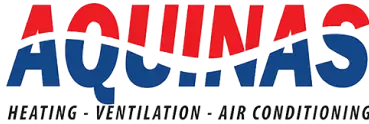Smarter Commercial HVAC Strategies for Orange County Properties
Orange County is home to a diverse property landscape—high-rise office buildings in Irvine, bustling retail centers in Costa Mesa, smaller light commercial properties such as small warehouses and small shops, and sprawling multi-family communities in Anaheim. With such variety, property managers and owners face a unique challenge: keeping commercial HVAC systems reliable, efficient, and adaptable across different building types.
That’s why property owners increasingly turn to smarter HVAC strategies—plans that go beyond quick fixes and instead emphasize long-term efficiency, better air quality, and reduced downtime. For commercial and multi-family properties, the right approach can protect investments, lower operating costs, and create a healthier environment for tenants.
Energy Efficiency and Compliance
Every property manager in Orange County has energy performance at the top of their mind—especially with rising utility rates and the demands of Title 24. California’s standards require HVAC systems in commercial and multi-family properties to meet strict benchmarks for performance, controls, and air distribution. Falling short not only increases costs but can also invite compliance issues.
Understanding Title 24 in Orange County
Title 24 shapes how HVAC systems are designed, installed, and maintained. It emphasizes:
- Energy-efficient equipment
- Proper ventilation and airflow
- Smart controls for temperature regulation
- Verified testing and system documentation
Property managers who ignore these requirements risk higher energy bills and potential penalties.
System Upgrades That Deliver ROI
One of the most effective ways to stay compliant is through system upgrades and retrofits. Many Orange County buildings still rely on outdated rooftop units or packaged systems. Modern retrofits can include:
- High-efficiency compressors
- Variable-speed drives
- Advanced thermostatic controls
- Building automation systems for real-time monitoring
Another effective measure is demand-controlled ventilation. Instead of delivering constant airflow, systems adjust based on actual CO₂ levels in office or retail spaces—ensuring proper ventilation while reducing wasted energy.
By working with an Orange County HVAC contractor who understands how property managers can turn compliance into an opportunity for lasting savings.
For a closer look at planning successful retrofits, see our guide on Commercial HVAC Retrofit Planning in California.
Indoor Air Quality in High-Traffic Buildings
Tenants may not notice an efficient HVAC system, but they will quickly notice poor indoor air quality. In Orange County’s office towers, retail centers, and mixed-use properties, thousands of tenants and visitors share indoor air daily. Left unchecked, poor IAQ can lead to headaches, respiratory issues, and even lower tenant retention.
Why Air Quality Drives Tenant Satisfaction
Tenant comfort and health hinge on clean, properly conditioned air. Property managers who prioritize IAQ see benefits such as:
- Fewer tenant complaints
- Higher lease renewal rates
- Reduced absenteeism in office environments
- Increased foot traffic in retail spaces
Neglected ductwork doesn’t just hurt air quality—it reduces cooling efficiency as well. Read our 5 Ways Dirty Ducts Are Overworking Your Cooling System (and Costing You Money).
Practical Strategies for Better IAQ
Improving air quality requires a multifaceted approach:
- Duct cleaning: Removes accumulated dust, allergens, and microbial growth that circulate through the building.
- Advanced filtration: MERV-rated or HEPA filters capture finer particulates, appealing to health-conscious tenants.
- Balanced humidity control: Prevents mold and ensures consistent comfort across spaces.
- Optimized cooling performance: Ensures that mixed-use properties maintain proper comfort levels for both residential and retail tenants.
By combining duct cleaning with optimized cooling services, property managers can improve both comfort and equipment efficiency. The result is a healthier environment that boosts tenant satisfaction and protects the property’s reputation.
👉 Learn more about our Duct Cleaning solutions designed for high-traffic properties.
Smart System Design for Multi-Family Units
In multi-family housing, HVAC systems must serve dozens or even hundreds of tenants with very different comfort needs—no easy task without smart design. Whether it’s an upscale community in Newport Beach or a duplex in Santa Ana, systems need to balance efficiency with flexibility.
Why Zoning Matters in Multi-Family Properties
Zoning is essential for consistent comfort across diverse units. Without it, a sunny top-floor apartment may overcool the entire building, while shaded lower units remain uncomfortably chilly. Modern zoning systems and variable refrigerant flow (VRF) technology solve this by:
- Distributing heating and cooling only where needed
- Allowing tenants to control comfort independently
- Reducing unnecessary energy waste
Seasonal planning matters too, as we outlined in Apartment Complex HVAC Maintenance in California: Last-Minute Winter Prep Tips.
Balancing Costs with Long-Term Value
Smart design goes beyond zoning. Property managers should consider:
- Lifecycle costs vs. upfront expenses: Investing in high-efficiency systems reduces long-term operating costs.
- Smart thermostat integration: Improves tenant satisfaction while cutting waste.
- Energy rebates and incentives: Help offset the cost of advanced systems.
- Reliable heating services: Even in mild Orange County winters, efficient heating systems reduce utility costs.
A trusted Orange County HVAC contractor can guide property managers through decisions that align with both budget and long-term performance goals.
👉 See how our HVAC Installation services support multi-family properties throughout Orange County.
Why Smarter Planning Prevents Downtime
Unexpected HVAC downtime doesn’t just cause discomfort—it disrupts business operations and damages tenant trust. In Orange County, a mid-summer failure can halt productivity in office spaces, reduce retail sales, and overwhelm multi-family property managers with service calls.
The True Costs of Downtime
- Emergency service premiums
- Loss of tenant productivity or sales
- Increased complaints and reduced tenant satisfaction
- Potential damage to reputation and lease renewals
Of course, many costly breakdowns can be avoided entirely through proactive strategies like those covered in Beyond the Filter: Unseen HVAC Maintenance That Saves Big for Commercial Properties.
Maintenance Programs That Protect Investments
Proactive planning minimizes risks through maintenance programs, which often include:
- Refrigerant checks to prevent compressor failure
- Electrical inspections to reduce shutdown risk
- Coil cleaning for optimal efficiency
- Filter replacements for air quality and system performance
- Emergency response support for unexpected issues
While emergency repairs will always be necessary at times, preventative strategies extend equipment lifespan, reduce costs, and keep tenants comfortable year-round.
👉 Explore our Maintenance Programs to see how proactive planning can prevent costly downtime.
Conclusion: Partnering with Aquinas HVAC
Orange County’s property landscape demands HVAC solutions that balance energy efficiency, tenant health, and operational reliability. From Title 24 compliance to indoor air quality improvements and multi-family system design, smarter strategies ensure properties remain competitive and tenants remain comfortable.
At Aquinas HVAC, we specialize in serving property managers and owners across Orange County with tailored solutions for office buildings, retail centers, and multi-family housing. Whether it’s upgrading systems, improving air quality, or preventing downtime, our team delivers the expertise you need to protect your investment.
Ready to take a smarter approach to HVAC management? Contact our Santa Ana team today and discover why property managers across Orange County trust Aquinas HVAC as their go-to partner.
Related: See how property managers in San Jose and San Diego are addressing similar HVAC challenges in their regions.

